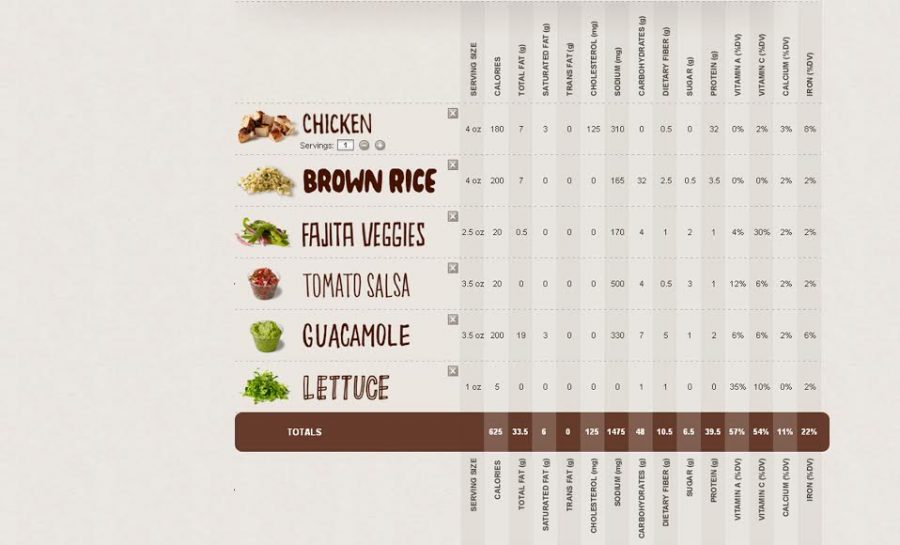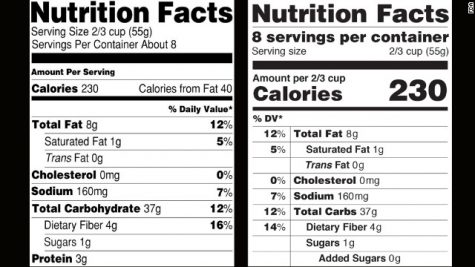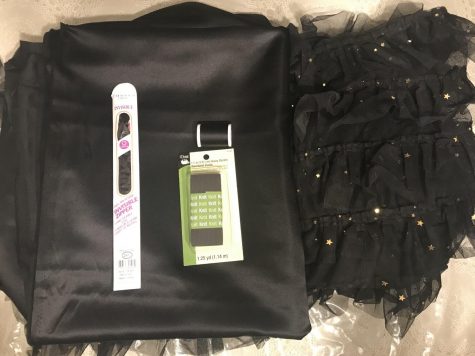Do food labels make a difference?
I never used to pay attention to the content of the foods I ate. As a kid, I never understood nutrition labels and thought that they were utterly boring. I didn’t care about the foods I ate, or how unhealthy they were for me, but now that I’m older, I’m more conscious of the things I eat and am beginning to pay closer attention to food labels.
When I didn’t pay attention to what was on food labels, I would tend to eat unhealthy and sugary foods like chips and cookies; I felt indifferent. It was time for a positive change in my eating habits.
As an experiment to see what kind of foods I ate, and whether they were healthy, I recently decided to keep track of my daily consumption for two weeks, five days a week, from Monday through Friday.
In the beginning, I was really motivated to be consistent in keeping track and writing down everything that I ate, but I had some doubt that I wouldn’t be able to keep up. Thankfully, I was able to go through with my original plan and didn’t fail or forget to document anything.
I wanted to target the amount of sugar there was in my foods and drinks as well as the amount of calories certain foods had, and whether or not these numbers were significantly surprising.
For example, one day for breakfast I had one green apple and a cup of Ahmed Earl Grey tea; for lunch I ate a barbeque chicken salad; and for dinner I had a Chipotle bowl with chicken, brown rice, veggies, salsa, lettuce, and guacamole. I thought this seemed like a pretty balanced diet for the day. For breakfast I consumed 97 calories total, at lunch 390, and at dinner 625, to add up to a total of 1112 calories.
To figure out the amount of calories I ate, I read the nutrition label on my salad and also logged on to chipotle.com and used the website’s calorie counting feature. A simple google search helped me figure out the amount of calories I had for breakfast on this particular day.
Using the Chipotle website, I was able to see not only the amount of calories of each ingredient but also the amount of fat, cholesterol, sodium, carbohydrates, sugars, proteins, and nutrients in each. In total, the Chipotle bowl I had for dinner had 33.5 grams of fat, 125 mg of cholesterol, 1475 mg of sodium, 48 g of carbohydrates, 6.5 g of sugar, 39.5 g of protein, and high contents of Vitamin A, Vitamin C, Calcium and iron.
Finding this information was a real eye-opener because I never would have guessed that these were the actual content amounts. Also, after documenting the foods I ate for two weeks, I realized how important it is to keep track of what one eats. It’s not right to just eat without thinking first, and knowing the components of each ingredient is crucial in eating balanced and healthy meals.
In response to the growing public interest in being aware of what we eat, in 2010, President Obama signed a health care law that requires restaurants to display the amount of calories in standard menu items and in each serving of a food at a buffet or salad bar, much like Chipotle. This law gives people the right to know the content of what they’re eating, even if it doesn’t help them eat healthier.
School nurse Kym Jarnot said that people should limit eating processed foods, but she said that she knows that sometimes people need to eat packaged foods. “One should know what they are putting into their body,” Jarnot said. “Food labels make a difference if people educate themselves about what is healthy and how much they need of what in addition to knowing the things they don’t want to put in their body.”
With that said, when I learned that the Food and Drug Administration (FDA) recently proposed changes that they want to make to nutrition labels in order to make it easier for people to choose to eat healthier foods, I was thrilled because I saw a positive change making its way into our society.
These changes include providing extra emphasis on the amount of calories, sugars and certain nutrients. The main goal of this is to make it easier for people to notice the content of the foods they eat. Now, food labels are difficult to read and don’t highlight any specific parts. Much of these proposed changes were announced on Feb. 27 by the FDA. Their proposals will undergo a 90-day comment period and might be implemented next year.
Senior Renita Moradian, who believes that being aware of what goes into one’s body is important, thinks that these changes will be a good thing. “If it’s a bigger font then maybe people will pay attention to it because it will be right there in their face,” Moradian said. “It doesn’t have to be like size 72, but at least big enough to read and pay attention to.”
Moradian said that she feels that there is more awareness to food labels than before, but at the same time there is still not enough awareness. “People should be more aware and start looking out for themselves more,” Moradian said. “You’d be surprised to see how much sugar can be in a little piece of candy or the amount of calories in bread.”
Health teacher Randy Tiffany shares the same views. “It’s a pretty good idea. Some of that stuff is so small, you can’t read it anyway, especially on candy,” Tiffany said. Tiffany said that it’s good to know the amount of sugar, calories and saturated fat in foods. If people paid attention to labels, it would make a big difference to them, he said.
The FDA also wants to make it easier to read food labels so they have proposed to change serving sizes. For instance, instead of providing the nutrition facts of half a drink, the serving size will go up to one bottle, or the entire drink.
In a way, I feel like this will dumb down the general public because it gets rid of the need to multiply and calculate on their own, but I also think it’s beneficial because people will better understand what they’re looking at.
This approach targets a wide range of people because most are too young to understand or simply do not care to understand. The demand for these changes has increased because more people tend to eat processed or packaged foods rather than home-cooked meals.
Ultimately, good change is intended to come out of these proposed changes. Through self-study and experimentation, I can honestly say that reading nutrition labels do make a difference in the way people eat, and generally for the better.









